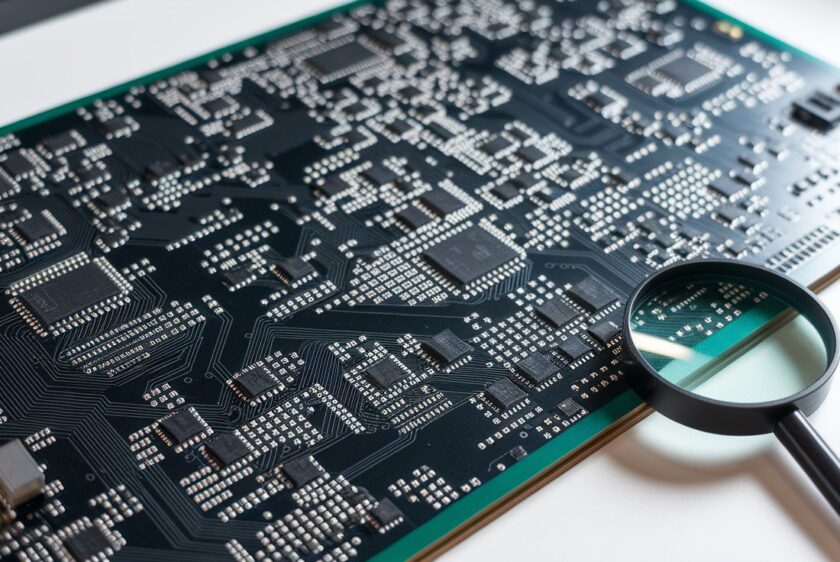
Introduction: In Defense Manufacturing, Compliance Is a System—Not a Slogan
For engineering leaders, program managers, and OEMs operating in defense, aerospace, or other high-security environments, compliance isn’t a peripheral concern. It’s foundational to maintaining adherence to International Traffic in Arms Regulations (ITAR) and defense trade controls.
Among the most critical standards in this space is ITAR—International Traffic in Arms Regulations—a U.S. government mandate that regulates the manufacture, handling, and export of defense-related articles, services, and technical data. This regulatory framework ensures compliance with the Arms Export Control Act (AECA) for safeguarding sensitive information related to national security.
If your product, design, or even component data falls under these rules, you need more than a capable contract manufacturer. You need an ITAR-compliant fabrication partner who understands the law, builds secure systems around it, and operationalizes compliance throughout the manufacturing process.
This guide defines what ITAR-compliant fabrication actually entails, why it matters for u.s. national security, and how to evaluate a partner who can support your build from prototype to full production—without introducing compliance risk.
What Is ITAR-Compliant Fabrication?
ITAR-compliant fabrication refers to electronics or hardware manufacturing processes that fully adhere to the standards set by the U.S. Department of State for handling defense-related products and technical data.
Specifically, this includes:
- Manufacturing of any item listed on the United States Munitions List (USML)
- Handling of related technical data, including drawings, models, firmware, or specifications that relate to USML-listed items
- Ensuring that only U.S. persons (citizens or permanent residents) have access to controlled technology
- Preventing unauthorized exports, which includes foreign nationals accessing export-controlled information
These requirements extend beyond physical goods. A non-compliant email or improperly stored Gerber file can constitute a violation.
ITAR compliance must be built into your manufacturer’s entire system—HR, IT, security, operations, documentation, and training—not just a locked cabinet or verbal promise. This involves adhering to strict operating procedures and a robust ITAR compliance program.
Who Needs an ITAR-Compliant Fabrication Partner?
If your product is being developed for any of the following categories, ITAR likely applies:
- Defense communications equipment (e.g., encrypted radios, tactical networks)
- Satellite and aerospace electronics
- Radar systems or guidance controllers
- Missile components or test equipment
- Military-grade navigation, surveillance, or targeting technologies
- Dual-use components destined for U.S. Department of Defense programs
Even startups or subcontractors without direct DoD contracts can be subject to ITAR if the end-use product is regulated.
If you’re unsure, you likely need to ask. And your EMS partner should be the one helping you figure it out.
What Does ITAR Compliance Look Like in a Fabrication Environment?
At a high level, ITAR-compliant fabrication requires integration of five key pillars:
1. Physical Access Control
Facilities must restrict access to ITAR-sensitive areas—both digitally and physically—to U.S. persons only. This includes:
- Badge access to production lines
- Visitor logs and clearance procedures
- Segregated workspaces for sensitive builds
- ITAR-labeled documentation and work instructions
At EST, our ITAR zones are physically walled off, badge-restricted, and independently monitored for access compliance.
2. Digital Security and File Handling
Your design files—Gerbers, BOMs, firmware, and models—are considered technical data under ITAR.
Proper handling includes:
- No use of global cloud platforms with data centers outside the U.S.
- No access granted to foreign nationals (even if they are employees or vendors)
- Use of encrypted, U.S.-based file transfer protocols
- Documentation of every instance of file access, modification, and transfer
At EST, we maintain separate, access-controlled ITAR file repositories and document all file movement within our MES.
3. Registered and Auditable Compliance Systems
Only manufacturers registered with the DDTC (Directorate of Defense Trade Controls) can legally build ITAR-controlled products.
They must also:
- Conduct ITAR training for all staff
- Maintain a Technology Control Plan (TCP)
- Perform internal audits and correct violations immediately
- Document every step of the compliance workflow
EST has been ITAR-registered continuously since 2019, with a fully documented and enforced compliance program.
4. Documentation, Serialization, and Traceability
Every build under ITAR must be fully documented—from initial quote to shipment—including:
- Serialized tracking of each PCB or assembly
- Inspection records, test reports, and nonconformance logs
- ECO history and change approvals
- Secure archive of all documentation for 5+ years
Traceability isn’t a suggestion under ITAR. It’s an obligation. We enforce full part-to-product traceability on every build we produce for ITAR-sensitive clients.
5. No Unauthorized Subcontracting
An often-overlooked risk in offshore or loosely managed supply chains is subcontracting. A Tier 1 manufacturer may pass a build—or a partial process—to a Tier 2 or Tier 3 provider who isn’t ITAR-compliant.
That’s a violation.
EST maintains full in-house control over ITAR builds and does not subcontract ITAR work under any circumstances.
Why It Matters: Legal, Strategic, and Operational Risk
The stakes for non-compliance with ITAR are not theoretical. Penalties include:
- Civil fines up to $500,000 per violation
- Criminal fines up to $1 million and 20 years in prison
- Loss of export privileges
- Contract termination by government primes or customers
- Long-term reputational damage
Even a single misstep—like emailing a design file to an offshore consultant—can trigger an investigation.
By contrast, a trusted, U.S.-based ITAR-compliant fabrication partner gives you:
- Peace of mind that you’re operating within U.S. law
- A smoother path through contract and procurement compliance
- Reduced risk in audits, inspections, or certifications
- A strong trust signal to primes, program managers, and defense contractors
What to Ask When Vetting an ITAR-Compliant Manufacturer
Here are seven critical questions to ask:
- Are you registered with the DDTC for ITAR compliance?
- How do you control access to ITAR zones—both digital and physical?
- What systems do you use for secure file handling and version control?
- Do you subcontract any part of your ITAR builds?
- Can you provide a sample Technology Control Plan or visitor log?
- How do you handle audit requests and documentation storage?
- Are your staff trained on ITAR compliance annually?
If a partner hesitates—or doesn’t have immediate answers—you may be looking at elevated risk.
The EST Advantage
At EST, we don’t just check the box on ITAR compliance—we’ve built our infrastructure around it.
Our systems include:
- Fully segregated, badge-controlled ITAR build zones
- Documented file access controls and encrypted transfer systems
- U.S.-only personnel and strict hiring filters
- Continuous ITAR training for all employees
- 100% traceability, serialization, and inspection records
- Audit-ready documentation for primes, defense agencies, or contract offices
We serve defense, aerospace, and dual-use tech innovators who require confidentiality, control, and production-level trust.
Case Snapshot: Mission-Critical Defense Sensor Program
Challenge: A defense prime needed to shift an avionics sensor assembly from an offshore EMS to a domestic, ITAR-compliant partner following a compliance scare.
EST Solution:
- Rebuilt the documentation set, including FAI, process validation, and test records
- Integrated secure firmware flashing protocols tied to serialized PCBs
- Converted production to full in-house fabrication under ITAR registration
- Supported the client’s re-qualification with both the end customer and DoD procurement
Result: Client avoided program shutdown, passed a surprise audit, and expanded their scope with EST into a second product line.
Final Word: Compliance Is Capability
In high-stakes sectors like defense and aerospace, the ability to build is not enough. You must prove you can build securely, repeatably, and in full alignment with U.S. law.
That’s what ITAR-compliant fabrication delivers. And that’s why the right EMS partner—one who doesn’t just claim compliance but proves it daily—is a strategic differentiator.
At EST, we bring precision, protection, and process discipline to every ITAR-regulated build, ensuring continued compliance with international traffic in arms regulations.
Key Takeaways
- ITAR-compliant fabrication is essential for defense, aerospace, and sensitive dual-use electronics
- Compliance includes physical security, data handling, documentation, and traceability
- Non-compliance risks include fines, jail time, loss of export rights, and contract terminations
- A true ITAR partner will provide in-house control, U.S.-only access, and audit-ready systems
- EST offers full ITAR infrastructure for secure, scalable, and regulation-compliant electronics manufacturing








